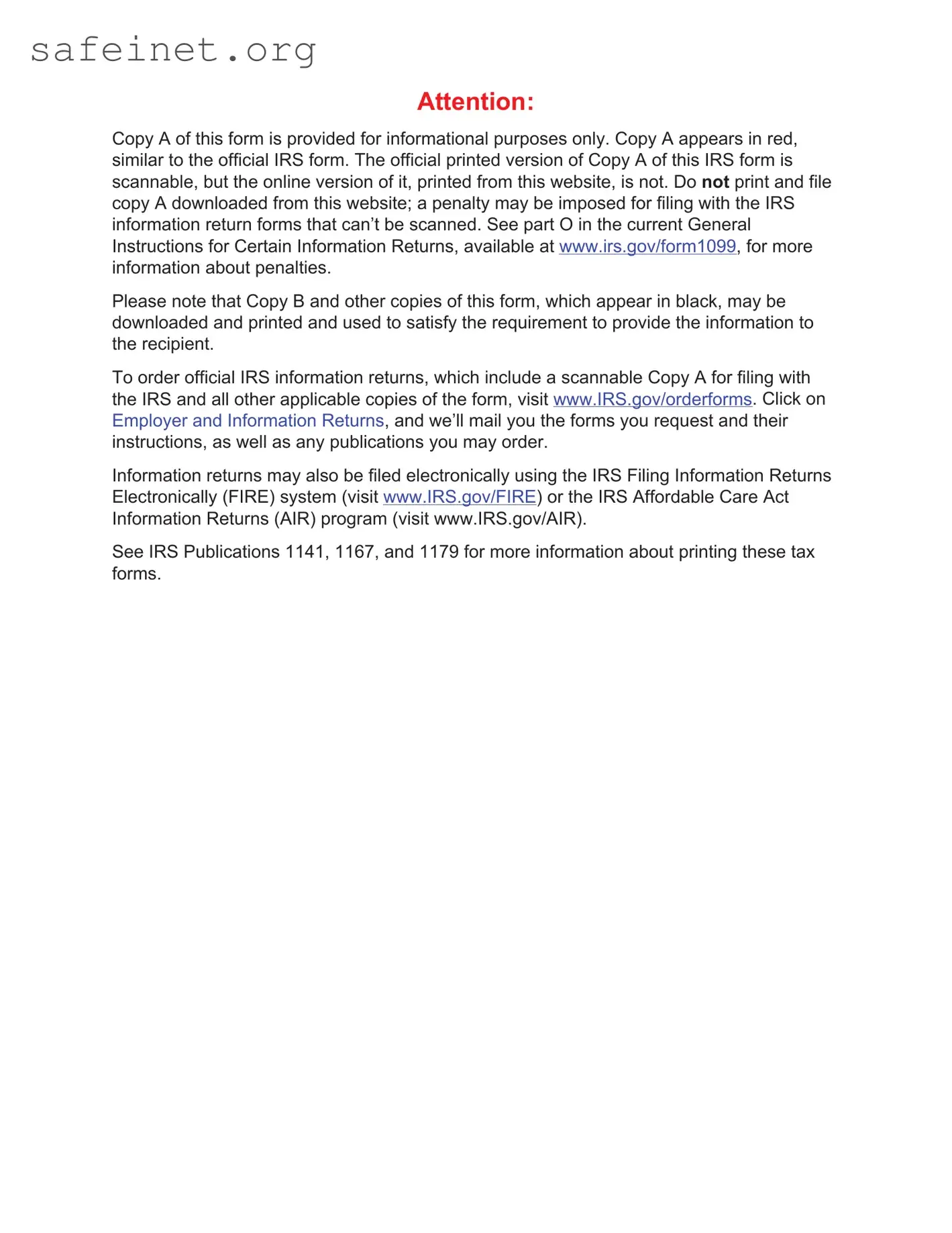The IRS 1098-E form is primarily related to student loan interest. Similarly, the IRS 1098 form is another important document that helps taxpayers report payments made towards mortgage interest. Both forms serve to provide tax deductions, making them valuable for individuals trying to minimize their taxable income. While the 1098-E focuses on educational financing, the 1098 highlights home ownership and the costs associated with maintaining it, underlining the commitment to encouraging education and home investment through tax benefits.
Another related document is the W-2 form. Issued by employers, the W-2 provides employees with a summary of their annual earnings and the taxes withheld. Like the 1098-E, this form plays a crucial role in the tax preparation process. It informs the IRS of an individual's income and helps ensure that the correct amount of taxes is paid, showcasing the importance of accurate financial documentation in the realm of income reporting.
The 1099 form shares similarities with the 1098-E as well. Used to report various income types outside of traditional employment, such as freelance work and investment earnings, the 1099 informs the IRS of income that taxpayers might not recognize. Both forms relate to capital and the tax benefits associated with specific expenses, making effective tracking essential for financial responsibility.
The Schedule A form, used for itemizing deductions, complements the 1098-E in the context of student loan interest. While the 1098-E reports the amount of interest paid, the Schedule A allows taxpayers to input this amount for potential deductions on their federal tax return. Together, they create a streamlined process for taxpayers aiming to take advantage of available educational deductions.
Financial Aid Statement is another important document akin to the 1098-E. It summarizes the assistance a student receives, including scholarships, grants, or loans. Similar to the 1098-E, this document outlines educational financing; however, it also provides insight into the overall funding mix. This comprehensive view helps students and families assess their financial choices and plan for future investments in education.
The 1095-A form, which provides information about health insurance coverage under the Affordable Care Act, shares a financial nature with the 1098-E. This form informs taxpayers about their health insurance earnings and potential premium tax credits, revealing how the government incentivizes certain expenditures. While the 1098-E focuses on educational loans, both documents emphasize the significance of information for tax-related decisions.
Lastly, the FAFSA, or Free Application for Federal Student Aid, is essential for students seeking financial assistance for college. Although not a tax form, it assesses financial needs and may influence eligibility for loans reported on the 1098-E. Understanding the connections between these documents emphasizes the intricate relationship between education funding and tax implications, guiding students and families in their financial planning.



